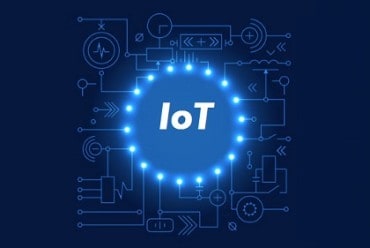
IoT is widely used in InsurTech, playing a crucial role of real-time data analytics in modern insurance processes.
The fast evolution of information technologies fundamentally transforms the insurance industry. It forces insurers to change traditional workflows and integrate modern technological solutions. This article examines how IoT implementation influences the InsurTech sector and how insurers benefit from it.
InsurTech refers to implementing advanced technologies into the insurance industry. The most common of these are the Internet of Things (IoT), artificial intelligence (AI), and machine learning (ML). InsurTech enhances risk assessment and improves insurers’ overall efficiency.
InsurTech leverages IoT to collect and analyze data from various IoT devices, such as wearables, smart home systems, GPS trackers, etc. The data is then analyzed using AI and ML algorithms. This allows insurers to better identify risks and create optimal pricing models.
Moreover, InsurTech can automate brokers’ tasks, such as consulting, sales, and claims processing. This significantly reduces manual work, cuts labor costs, and minimizes delays.
Role of IoT in InsurTech
IoT revolutionizes the insurance industry. Let’s explore some examples of its impact.
Usage-based auto insurance
Previously, insurers used historical data to assess risks and determine insurance premiums. For instance, when insuring a car, they would consider its type, location, mileage, driver’s age, and experience.
IoT allows insurance companies to receive real-time data from customers’ connected devices. For instance, IoT sensors built into connected cars collect and send valuable information to insurers about driver behavior, driving speed, manner of braking and steering wheel rotation, vehicle mileage, etc.
AI algorithms enable the analysis of the collected information, determining how safe each trip was and calculating the risks. This allows insurers to identify high-risk drivers and set more accurate and fair premiums. Providing unique offers and discounts to more responsible drivers encourages them to drive more safely and responsibly.
Automation of claims processing
Claims processing is an essential process in insurance companies’ work. It affects customer satisfaction and the profitability of insurance firms. In case of accidents, connected vehicles have built-in systems to alert the insurer instantly. In addition, IoT sensors can also collect and transmit detailed information regarding the incident directly to insurers.
Using IoT data analysis, automated decision-making algorithms can resolve claims without human intervention or forward suspicious claims for further processing by specialists. Insurers can handle claims quickly, make accurate assessments, and detect fraud.
For instance, in case of an accident, IoT sensors in vehicles can detect and report it to insurers automatically. These sensors gather and send data about the accident’s details, like its severity and the vehicle’s speed at the moment of the collision, as well as other essential factors. This real-time information enables insurers to quickly process claims, speed up settlements, and provide required assistance to policyholders, enhancing overall satisfaction.
Personalization of insurance policies with Health Data
Smart wearables, such as smartwatches, bracelets, and fitness trackers, are among the most popular electronic goods. They track health metrics like heart rate, blood pressure, sleep quality, and daily steps.
Wearable smart devices allow insurers to obtain complete information about customers’ health. Insurance providers can determine insurance premiums more accurately by assessing their customers’ risks. They can offer perks such as discounts, lower rates, and rewards to those who maintain a healthy lifestyle and stay active. This approach promotes healthy living and reduces the likelihood of insurance claims.
Smart home insurance
Smart homes have many different intelligent security systems that prevent accidents. Let’s explore some of them:
- Smart doorbells and cameras identify criminals trying to break into a home and alert the owners or security services.
- An intelligent fire alarm detects smoke and fire on time and notifies homeowners and firefighters.
- Moisture sensors recognize minor pipe leaks before they cause significant damage.
Intelligent IoT devices can detect many risks before they cause critical damage, leading to a significant reduction in losses and insurance claims. Real-time IoT data analysis allows insurers to determine individual risk profiles and offer personalized insurance policies and discounts.
IoT sensors play an essential role in preventive maintenance of household devices. They can monitor the state and performance of technical devices and detect problems before they lead to breakdowns and costly repairs. Smart devices can send timely alerts when maintenance is needed. Timely repairs can prevent significant damage and insurance claims.
Improving interaction with customers
Insurance companies leverage IoT to improve customer experience. They use specialized applications, chatbots, voice assistants, and other technologies to collect real-time data about user preferences and behavior regarding various insurance services.
Insurers can utilize IoT data to determine which insurance policies interest their customers. This allows insurance firms to offer personalized policies adapted to the individual needs and behavior of the user.
In addition, introducing IoT provides more opportunities for interaction between insurers and customers. For instance, insurers can offer personalized recommendations, such as additional coverage options or lifestyle advice, using real-time IoT data analytics.
See also: How IoT Is Disrupting Commercial Insurance
Challenges
Effective implementation and use of IoT in InsurTech requires addressing some challenges. Let’s look at the main ones.
Data privacy and security
IoT devices usually collect sensitive data on people’s health and lifestyle, and massive amounts of data about customers’ behavior and habits are gathered. Misusing or mishandling customer data can lead to privacy violations. Additionally, sensitive information may be utilized for unwanted advertising and marketing purposes. As a result, data privacy protection becomes a vital aspect of implementing IoT to ensure customers’ trust and avoid possibly abusing personal information.
Moreover, the vast amount of IoT data is a big target for cyberattacks. Hackers can try intercepting data transmissions, exploit vulnerabilities in data processing systems, or break into storage infrastructure to access personal data. Therefore, establishing strong security measures is necessary to avoid unauthorized access, maintain customer trust, and prevent misuse of confidential data.
Integration of various IoT devices
The IoT ecosystem consists of many devices, protocols, and platforms. Still, often, they need more standardization to work together smoothly. This creates a significant challenge when integrating IoT devices.
To address this issue, insurers must collaborate closely with technology providers to establish common standards and interoperability protocols. Additionally, they may need to invest in robust middleware solutions or IoT platforms that support compatibility between different types of devices and protocols.
It is also important to choose an appropriate database that will scale as the amount of unstructured IoT data grows. MongoDB is an excellent option in terms of flexibility and scalability. MQTT MongoDB integration makes the data transfer from the broker to the database smooth and efficient, thus eliminating the need for custom software solutions.
Analysis of a vast amount of data
Insurers should effectively analyze massive IoT data to use its full potential. They need modern technologies and analytical tools to process structured and unstructured data in real-time. The most common ones are ML algorithms, predictive analytics models, and data visualization platforms. These tools can identify hidden patterns, trends, and correlations in data.
Insurers must hire qualified specialists like data scientists, analysts, and engineers to handle data effectively. These experts are crucial in developing and implementing data analysis strategies, creating models, and interpreting results.
Future of InsurTech
In the future, insurance companies will continue to actively implement advanced technologies. One direction will be the further use of AI and ML to analyze large volumes of IoT data. This will allow insurance companies to more accurately identify risks, predict events, and build more effective risk management strategies.
In addition, an essential development area will be to focus on improving the customer experience. Insurance companies will actively utilize data analytics to comprehend customer needs and behavior. Data analytics enables them to create personalized offers and provide more effective customer service.
Summary
The integration of IoT in InsurTech revolutionizes the insurance industry across various aspects, including risk assessment, claims processing, etc. It also enhances interaction with clients. With IoT technology, insurers can make processes easier, improve efficiency, and strengthen client relationships. This leads to reduced costs, increased profitability, and customer loyalty.
However, when integrating IoT, some challenges need to be carefully addressed. The main problems are data privacy and security, integration of various IoT devices and platforms, and practical analysis of the vast amount of data. Solving these problems is critical for the operation of insurance companies and customer satisfaction.




























